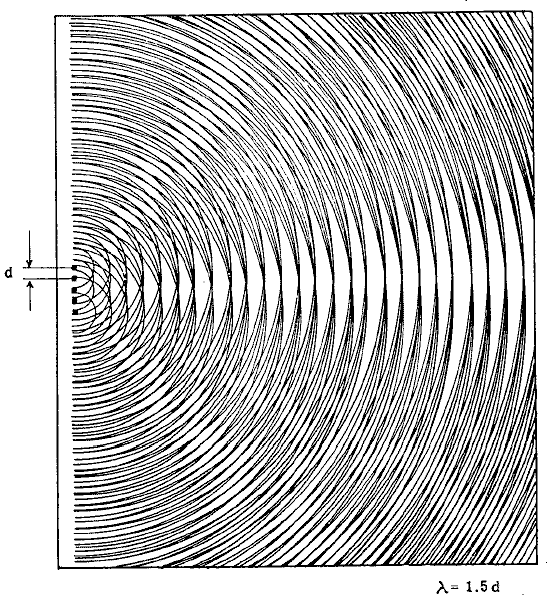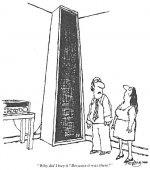I am not sure I will pursue this in the end, and it could be folly, but the 1/4 wavelength idea was for lobing "radiating as one," consistent directivity (my idea is also for a wide baffle). Of course, the directivity would be very wide as opposed to the current trend for controlled and narrow.
Re. ka </=1 I wonder about benefits of "true" pistonic action. I remember Charles Hansen discussing this in detail, describing how it informed his initial Avalon design. I think it is a component of the Vivid designs.
The idea would be the Bliesma tx with XO at 1.3k to one of the above mids, then transition to large woofer at 250-300hz (the pistonic and 1/4 wavelength criteria are much easier down there!).
Bill
Re. ka </=1 I wonder about benefits of "true" pistonic action. I remember Charles Hansen discussing this in detail, describing how it informed his initial Avalon design. I think it is a component of the Vivid designs.
The idea would be the Bliesma tx with XO at 1.3k to one of the above mids, then transition to large woofer at 250-300hz (the pistonic and 1/4 wavelength criteria are much easier down there!).
Bill
Unfortunately that metric assumes a flat cone and does not take into consideration cone shape or the radiation of a dustcap, so is, in the real world largely not all that useful.
dave
Definitely may not be as simple/straightforward as I am thinking
In that regard I sort of wish there was an accuton driver between the 2" and 5", that would maybe be the ticket.
Bill
Most of this problems can be solved by using dome mid, unfortunately choice is almost none on the market (Accuton, Dayton, Tang Bang and Morel).Definitely may not be as simple/straightforward as I am thinking.
In that regard I sort of wish there was an accuton driver between the 2" and 5", that would maybe be the ticket.
Bill
I'm curious how one applies CTC to line sources, especially ribbons. A line source such as an BG RD75 benefits from being crossed ~6kHz (it beams at 7kHz if memory serves). Adding a line source of ribbon tweeters would solve that problem (and since it is a line source, distortion issues some of this tweeters exhibit would be inconsequential since there would be ~12 per side). However, the closest one can place a tweeter to the BG is 4.5" CTC (if one goes the minimum of 3.5" then one side is not properly attached to the baffle). Crossing at 5 kHz gives a wavelength of 2.7", and 3kHz give a wavelength of 4.5" (but then the tweeters may be crossing too low). Any insights would be appreciated. Thanks
Last edited:
Line array throws out centre-to-centre… it causes the natural 3dB slope down in freuquency response that has to be EQed out.
One just makes the compromise to ignore centre-to-centre but if one s using discreet devices keeping C-C as small as possible is a good thing. Closer pushes issue up higher in frequency.

dave
One just makes the compromise to ignore centre-to-centre but if one s using discreet devices keeping C-C as small as possible is a good thing. Closer pushes issue up higher in frequency.

dave
Interesting contrast in understandings....
As my understanding is that a line array, even more so than most designs, is dependent on 1/4 WL spacing (or at worst 1/2 WL).
Wider spacing "breaks the line" and drivers begin combing worse and worse, and the line quits behaving per theoretical, both vs the freq rolloff and vs distance attenuation.
As my understanding is that a line array, even more so than most designs, is dependent on 1/4 WL spacing (or at worst 1/2 WL).
Wider spacing "breaks the line" and drivers begin combing worse and worse, and the line quits behaving per theoretical, both vs the freq rolloff and vs distance attenuation.
Wider spacing "breaks the line" and drivers begin combing worse and worse, and the line quits behaving per theoretical, both vs the freq rolloff and vs distance attenuation.
Yes. If one is approximating a line source with small direct radiators, spacing should be as small as possible to reduce deliterious effects.
dave
Pretty much ditto with point sources if it's an 'infinite' array, i.e. has proper floor/ceiling 'mirror' images as McIntosh proved with its XR290 system [at least to me and those at its demo]: McIntosh XR290 Speaker System
In a continuous ribbon, the c to c becomes zero and the “number” of point sources is infinite.
dave
Yeppa, as a fan of electrostats, planars, and ribbons...familiar concept.
That said, I guess a complete analysis has to look at the spacing details of the stator, as well as the driven membrane.
Good article, thx.
My observations as to how audible comb filtering is....
with music, from a tonality viewpoint it depends on frequency...combing is easy to hear down low, and tougher to hear up high, and very tough to hear up very high.
with pink noise, it's much easier to hear combing's effects throughout the spectrum.
Tonal balances can be fairly easily heard by anyone i think, and almost easier up high than down low.
For me, paying attention to the changing sound of pink, as i walk a room, or move about in distance, seems to be the best non-measurement way of gauging the tonality impact from combing.
In contrast to using pink to judge tonality,
i think from a dynamics viewpoint that music is better for judging combing's effects. Music just pops and sounds extended when there's little combing....
So imo, pink noise best displays combing's adverse effect in the frequency domain, whereas music best displays combing's effect in the time domain.....
Anyway, my 2c
My observations as to how audible comb filtering is....
with music, from a tonality viewpoint it depends on frequency...combing is easy to hear down low, and tougher to hear up high, and very tough to hear up very high.
with pink noise, it's much easier to hear combing's effects throughout the spectrum.
Tonal balances can be fairly easily heard by anyone i think, and almost easier up high than down low.
For me, paying attention to the changing sound of pink, as i walk a room, or move about in distance, seems to be the best non-measurement way of gauging the tonality impact from combing.
In contrast to using pink to judge tonality,
i think from a dynamics viewpoint that music is better for judging combing's effects. Music just pops and sounds extended when there's little combing....
So imo, pink noise best displays combing's adverse effect in the frequency domain, whereas music best displays combing's effect in the time domain.....
Anyway, my 2c
To build on what Mark raised as a valid point, here's a video demonstrating the phenomenon of lobing.
Centerline Audio Visual Danley Meyer Shootout - YouTube
Centerline Audio Visual Danley Meyer Shootout - YouTube
Previous discussion of the physics of lobing is accurate but...
If you get a few narrow bandwidth nulls in reflected sound you might not notice them.
"This is another example of humans being very well adapted to listening in reflective environments." Floyd Toole - Chapter 7.6.5.1 Ceiling and Wall Reflections
If you get a few narrow bandwidth nulls in reflected sound you might not notice them.
It serves no purpose unless you concentrate very hard and move your head around to consciously try to hear them, and who in their right mind would do that? We are programmed above all else to understand and recognise human voices in enclosed spaces.
well....for me...
It is not hard to hear that pink noise changes when moving my head around,
in fact it's impossible not to hear how it changes, and without any conscience effort.
So why don't my ears/brain make the necessary adjustments, such that i don't hear the changes?
With pink noise it's easy, it's like hearing phase as it's shifting, that's easy too. With normal transient, non stationary sounds the effect just becomes merged and the hearing system largely ignores it.
Phase, Time and Distortion in Loudspeakers
Phase, Time and Distortion in Loudspeakers
Last edited:
Another good paper, albeit quite dated.
With all due respect, i wish folks would quit quoting/linking old-school research/opinions when it comes to what is audible,
and start linking audibility studies of new-school tools and techniques.
Or better yet for us DIYers, just listen for ourselves and make our own audibility findings .....
so that in the future we can laugh yet again, at what we wrote about, when we knew lol
With all due respect, i wish folks would quit quoting/linking old-school research/opinions when it comes to what is audible,
and start linking audibility studies of new-school tools and techniques.
Or better yet for us DIYers, just listen for ourselves and make our own audibility findings .....
so that in the future we can laugh yet again, at what we wrote about, when we knew lol
- Home
- Loudspeakers
- Multi-Way
- How much does Center-to-Center distance matter
